This Rolex restoration video by an Aussie watchmaker hit 1m views in record time, and we can see why…
Zach BlassWe all dread the nightmare scenario of water damage in a watch. Water and watches is like Superman and kryptonite, too much exposure will wreck the timepiece. As soon as components are exposed to moisture, the process of oxidation and rust will begin and, as the days pass, render some of them irredeemable. Rolex makes some of the most robust and desirable watches in the world, but the increasingly luxurious nature of these products make some owners fearful of testing the professional capabilities of their tool watch. In a video released by Nicholas Hacko, a.k.a Master Watchmaker on YouTube, the Aussie watchmaker films the entire process of the restoration of a water exposed and highly rusted 1996 Rolex GMT Master II two-tone. And it’s clear people are curious to know what such a restoration entails – over the past two months the video has received over 1.7 million views!
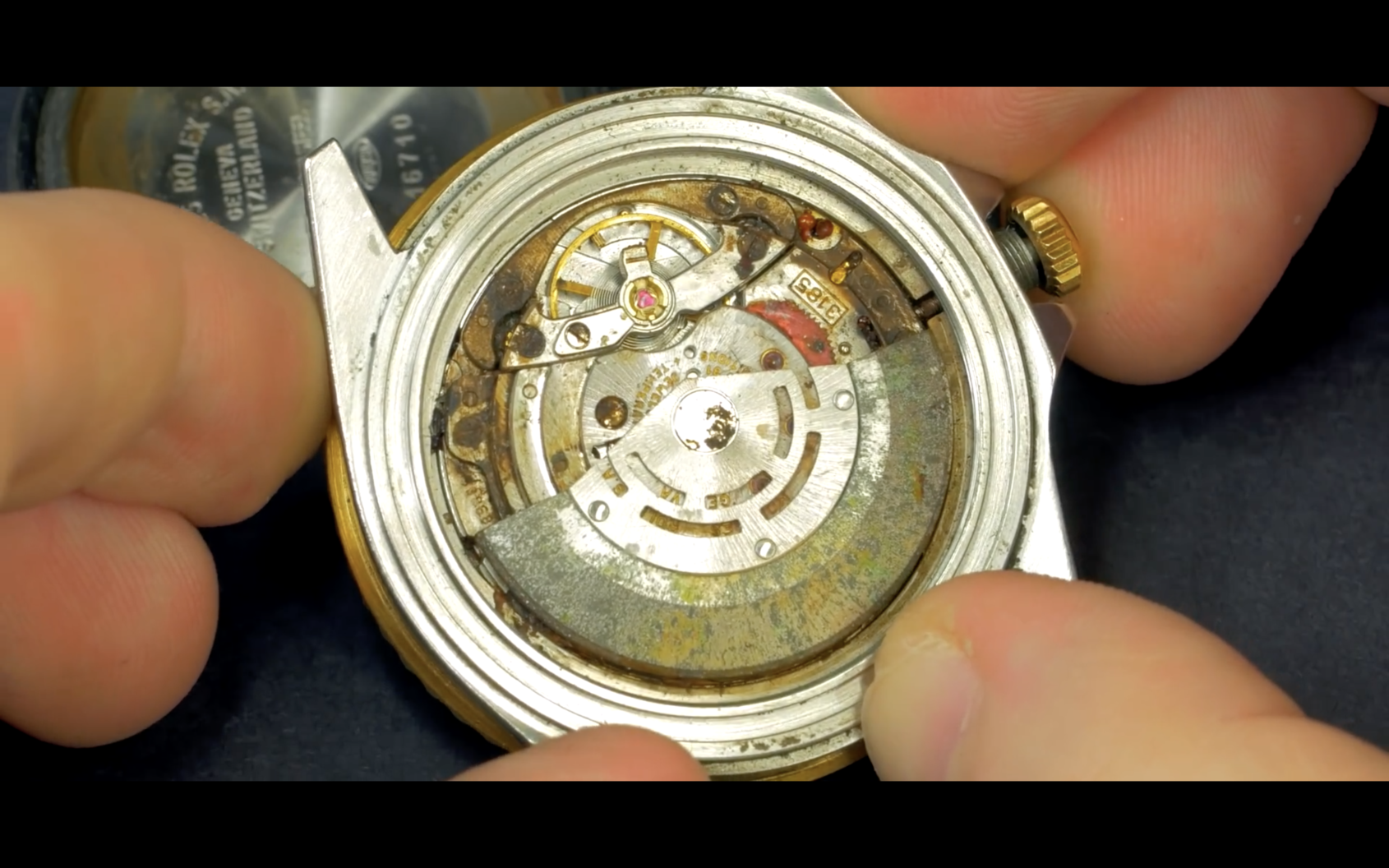
As you can see, this classic 1996 Rolex GMT Master II watch incurred serious water damage. The parts have developed significant rust on the rotor and even more so on the components below. While restorations can be pricey when they’re as extensive as this, we can all be thankful that it is at least possible to revive a watch that’s as damaged as this.
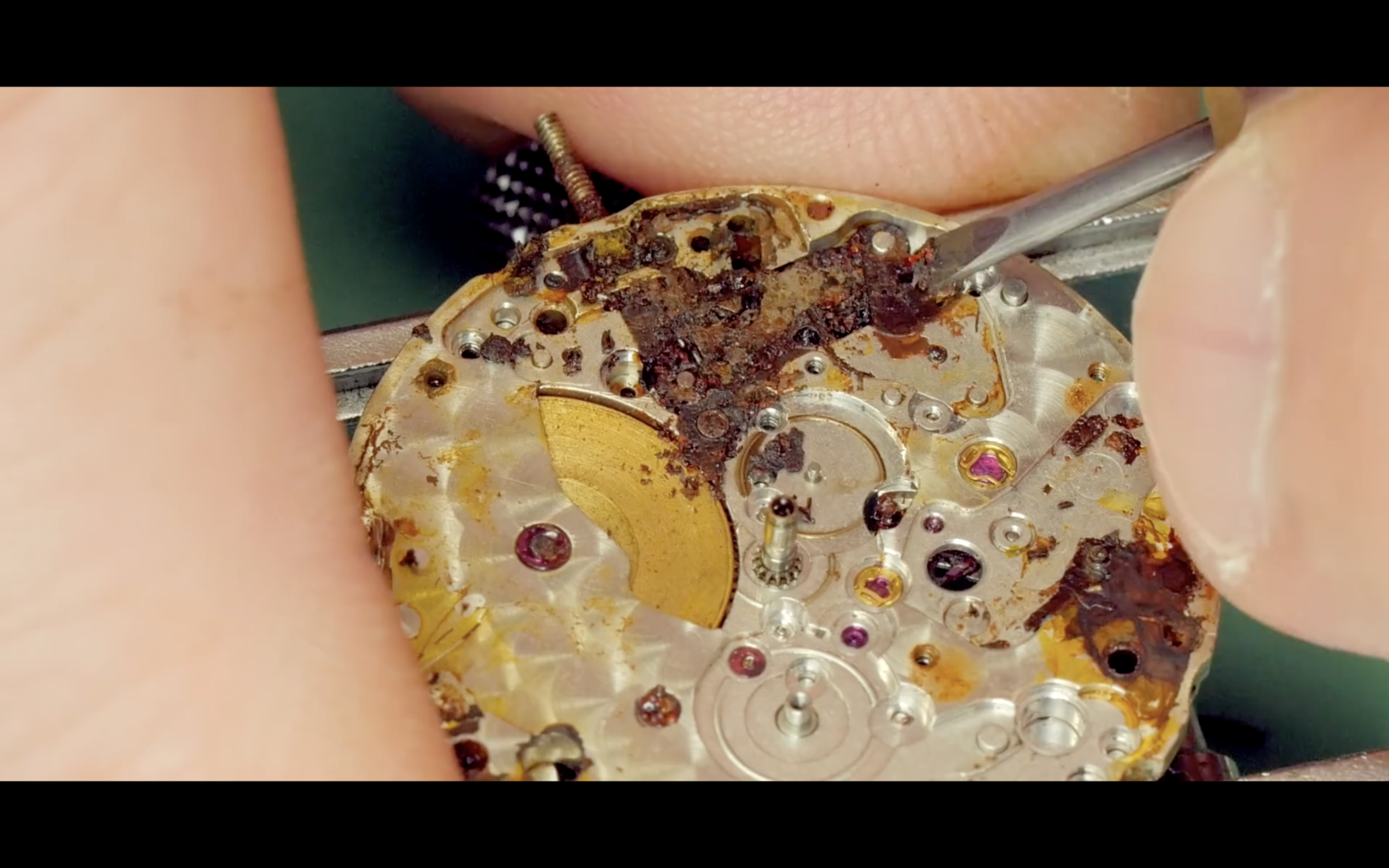
Any components that cannot be salvaged will be replaced entirely, while others will be cleaned by hand and then ultrasonically to remove rust from the internals. This can be very time-consuming. A watchmaker is not only working to repair the watch, but also to ensure they do not inflict any scratches or blemishes on the watch they aim to restore. This can be tricky because go too soft and the rust will not be removed, too hard and it will look like Zorro marked the movement.
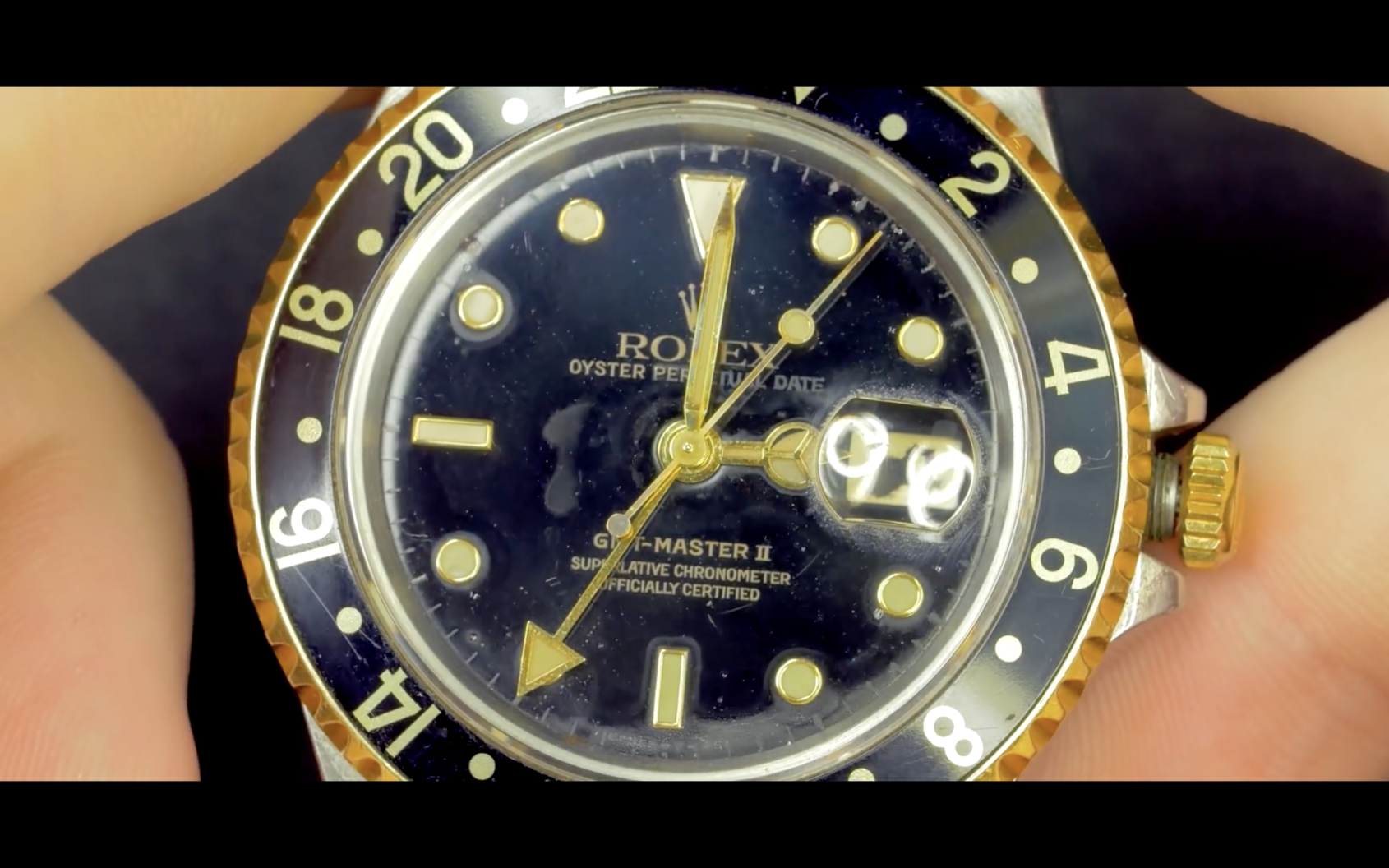
In this screen capture from the video it is clear, even without removing the caseback, that the watch has suffered water damage. The smudges and fog like look of the crystal are not Nicholas’s fingerprints but condensation and water that has dried underneath the crystal. Fortunately with the hands and circular hour markers being made of gold they have not developed much rust damage – a testament to Rolex and the brands who use precious metal hands in the name of preventing tarnishing over time.
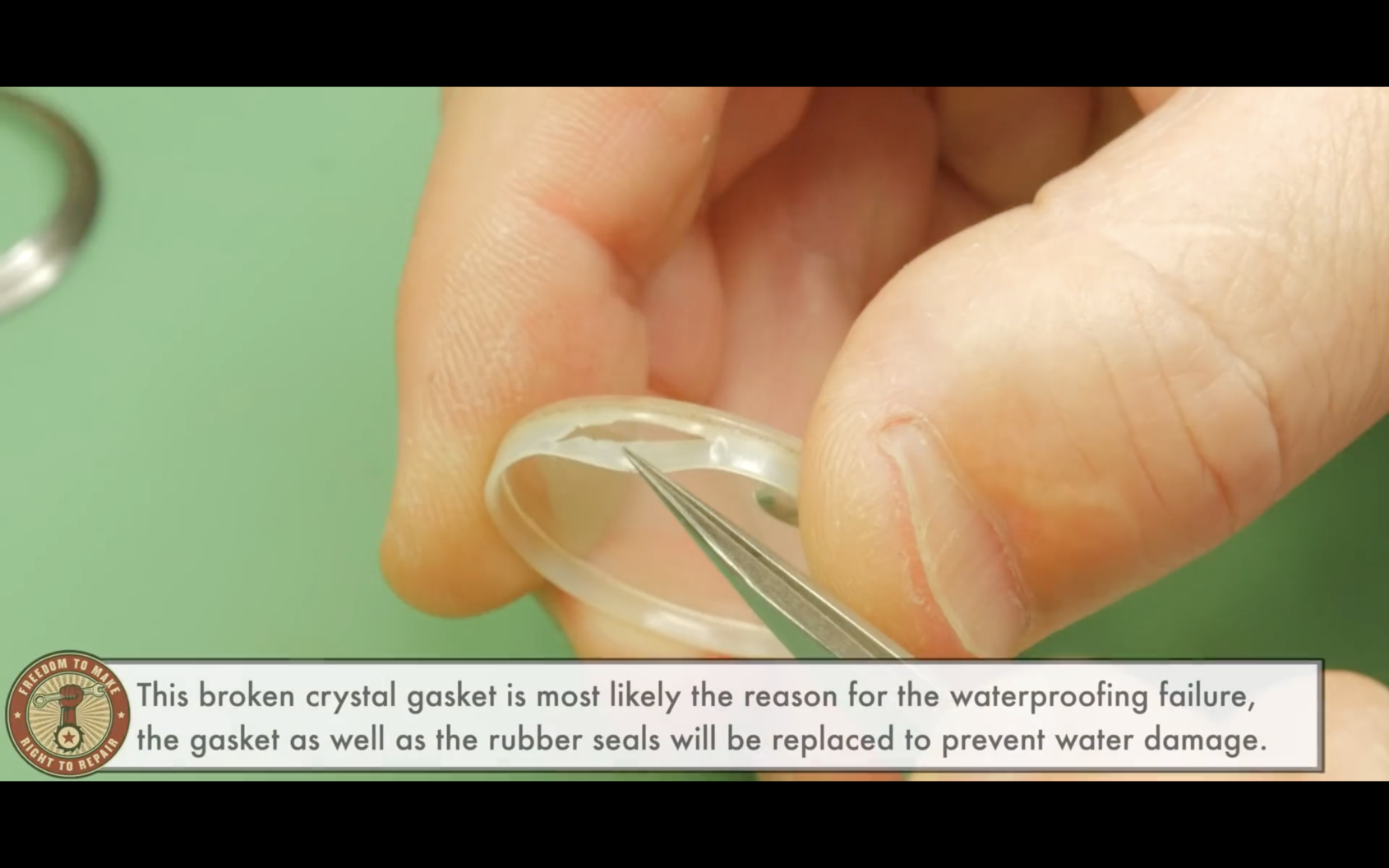
Throughout the near 30-minute video, both during disassembly and reassembly, Nicholas Hacko provides written commentary on his step-by-step moves during the restoration process. In the image above, he takes the time to show his viewers his diagnosis as to why the watch became so damaged. As you can see, the gasket that secures the crystal to the watch has a sizable tear – meaning the floodgates were quite literally wide open when the watch was submerged. You should regularly have your watchmaker pressure test and check the integrity of the gaskets of any watch you plan to swim/dive with once a year. The time and money lost in such a checkup will be far less than the overhaul you would need if the gaskets fail.
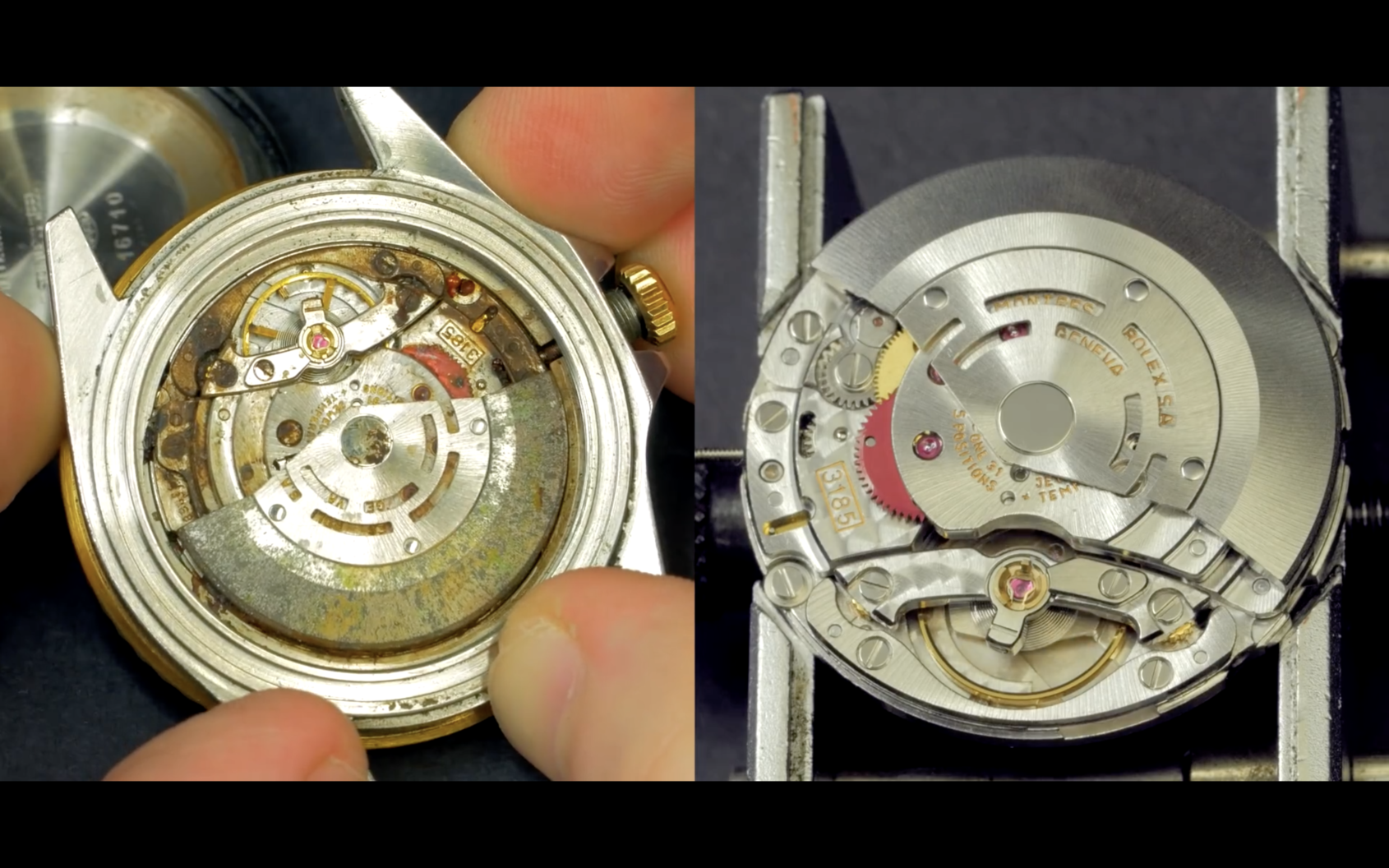
This video is the ultimate horological tale of redemption. What is great about it is not only do you get to see what a damaged movement and watch look like, but also the makeover of one that has been properly restored.
To see the video in full, with all of the tidbits only a Master Watchmaker could provide, click on the video below to watch the whole process in-depth – from start to finish.




